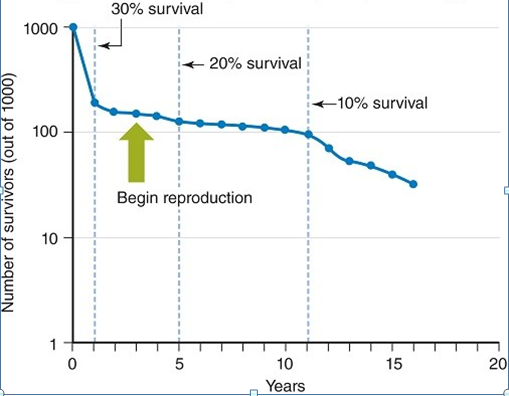A researcher knows that bacteria are much more prevalent in the seawater at the ocean's surface, compared to thaumarchaeotes. How does the ratio of bacteria to thaumarchaeotes compare at lower depths (5000 meters under the ocean's surface)?
A. Bacteria are still much more prevalent.
B. Thaumarchaeotes are much more
prevalent.
C. There are roughly equal numbers of
bacteria and thaumarchaeotes.
D. Neither bacteria nor thaumarchaeotes can
survive at that ocean depth.
C
You might also like to view...
Gonorrhea, a sexually transmitted disease, is an acute infection of the mucous membranes of the ________.
A. conjunctiva B. rectum C. genitourinary tract D. All of the choices are correct.
In this graph of yellow-eyed penguins, the data indicate that

A. 10% of the yellow-eyed penguins live to eleven years of age.
B. reproductive age of the yellow-eyed penguins is three years.
C. most of the yellow-eyed penguins die in their first year of life.
D. All of the answer choices are correct.
E. just less than 30% of the yellow-eyed penguins survive to reproductive age.
During an acrosome reaction, the acrosome:a
detaches, allowing the sperm to penetrate the egg. b. releases enzymes that digest the outer layer of the egg. c. secretes calcium ions, which cause the sperm to fuse with the egg. d. releases bindin, which causes the sperm to bind to the egg. e. secretes a chemical that attracts the egg to the sperm.
Invertebrates on land use __________ or __________ systems for gas exchange.
Fill in the blank(s) with the appropriate word(s).